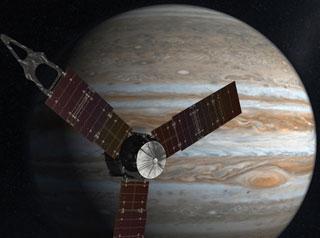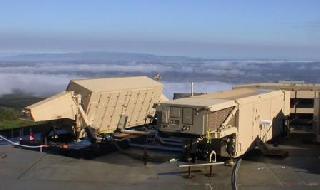
An artistic representation of NASA's Juno spacecraft
PASADENA (BNS): NASA’s Juno mission has received two vector magnetometers developed at NASA's Goddard Space Flight Center in Greenbelt, Maryland.
Juno is the second mission in NASA's New Frontiers programme.
A team of Goddard scientists, engineers and technicians have designed and built these instruments. They will map the planet's magnetic field with great accuracy and observe its variations over time.
Each of the two vector magnetometers carries a pair of non-magnetic star cameras to determine its orientation in space with commensurate accuracy.
"Juno's magnetometers will measure Jupiter's magnetic field with extraordinary precision and give us a detailed picture of what the field looks like, both around the planet and deep within," says Goddard's Jack Connerney, the mission's deputy principal investigator and head of the magnetometer team.
The Jet Propulsion Laboratory in Pasadena, California has scheduled the launch of Juno mission by 2011.
The spacecraft will carry nine instruments to investigate the existence of a solid planetary core, map Jupiter's intense magnetic field, measure the amount of water and ammonia in the deep atmosphere and observe the planet's auroras.
The Juno magnetometers will study Jupiter's powerful magnetic field, which is nearly 20,000 times as strong as Earth's.
The field is generated deep within the planet's atmosphere, where the intense pressure compresses hydrogen gas into an electrically conductive fluid. Jupiter's magnetosphere extends up to 3 million kilometers (nearly 2 million miles) toward the sun and as far as Saturn's orbit in the other direction.
 Previous Article
Previous Article Next Article
Next Article











The Indian Air Force, in its flight trials evaluation report submitted before the Defence Ministry l..
view articleAn insight into the Medium Multi-Role Combat Aircraft competition...
view articleSky enthusiasts can now spot the International Space Station (ISS) commanded by Indian-American astr..
view article